Experience the divine in Malay Bala’s ‘Seeking Sacred Beauty’
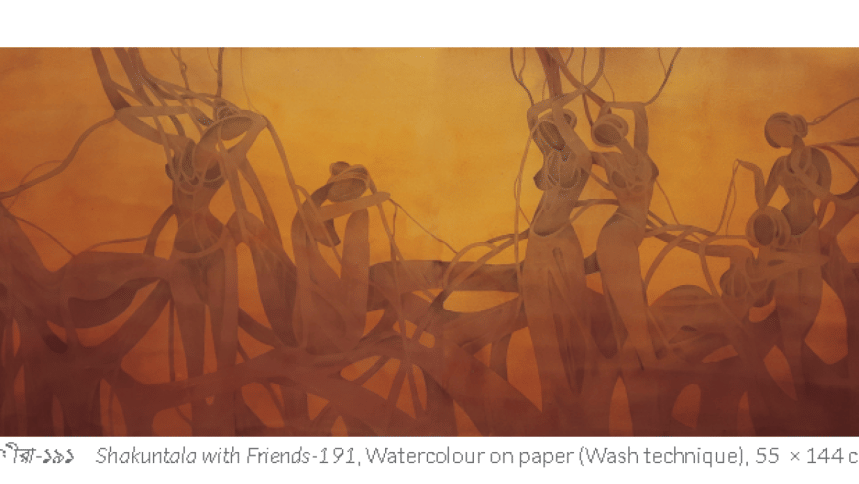
When one steps into the painting exhibition of artist Malay Bala at Alliance Française de Dhaka's La Galerie in Dhanmondi, one doesn't simply enter an art exhibition — one enters a sanctuary of stillness. The third solo show by Professor Dr Malay Bala, titled Seeking Sacred Beauty: The Devotional Art of Malay Bala, emits a calm, rhythmic whisper — a quiet hymn to the sacred, the feminine, and the natural. His third solo show opened on 18 October 2025 and runs until 28 October.
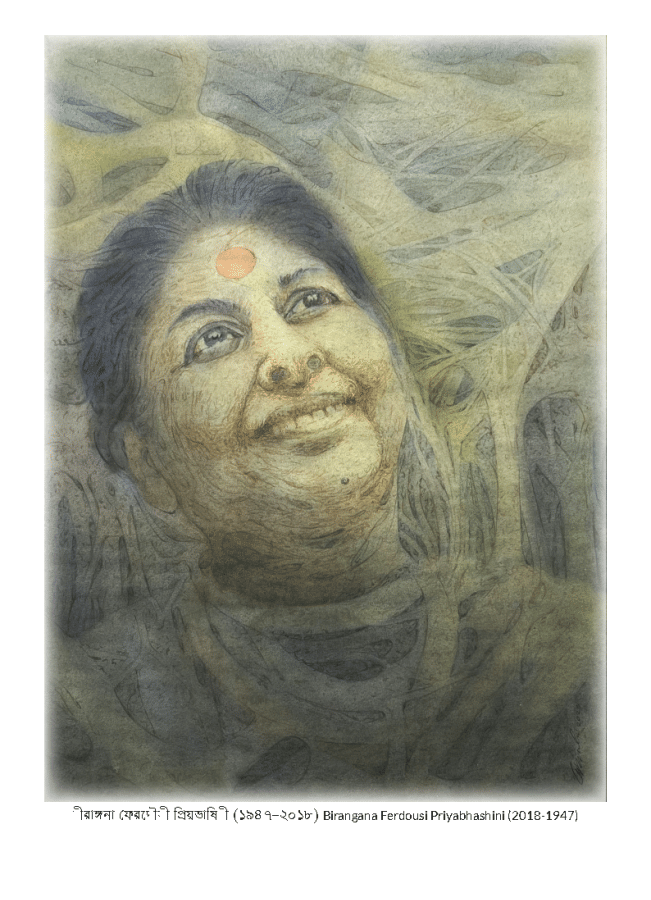
A Devotional Undertaking
In an age when speed, spectacle, and digital dazzle dominate visual culture, Malay Bala's exhibition stands out for its meditative pace and quiet invocation of the sacred. "I paint to seek, meditate upon, and become closer to God," the artist explains. "My heart senses the Divine within the sacred myths, spiritual masters, nature, and the divine grace of women that I strive to paint."
There are eighty artworks on display. What looks at first glance like a traditional show of watercolour and gouache soon reveals deeper currents: mythical narratives, singular technique, committed materiality, and a profound sense of spirituality.
Malay Bala is not just a painter but also a scholar — a Professor at the Department of Oriental Art, Faculty of Fine Art, University of Dhaka, holding a PhD in Oriental Art. His academic grounding in the oriental style of painting informs his technique and content: the wash technique pioneered by Abanindranath Tagore, the orientation towards the swadeshi spirit, and the invocation of the sacred traditions of Bengali aesthetics.
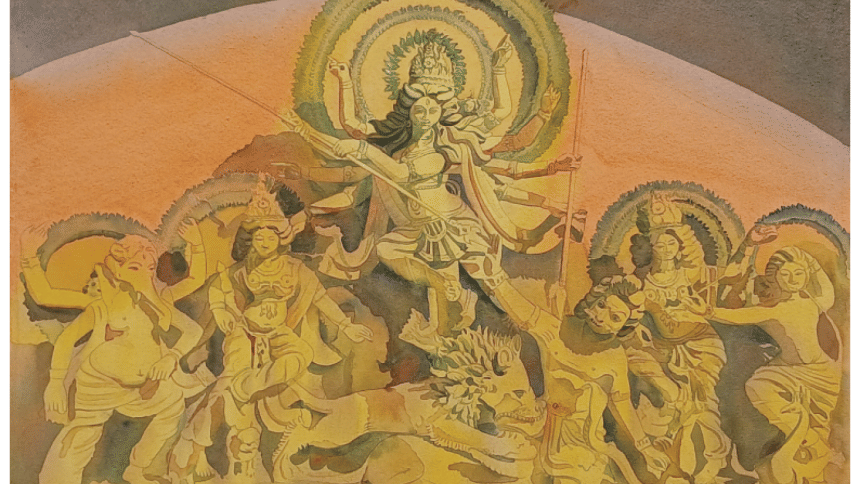
Four Narrative Streams
The works in this show are grouped under four narrative themes: Shakuntala, Dharma (Religion), Pobitro Nari (Sacred Women), and Prakriti (Sacred Nature).
Shakuntala: Drawing on the story of the eponymous heroine of Kalidasa's Abhigyan Shakuntalam, the paintings in this series depict the meeting of mortal and celestial, of earth's longing and heaven's grace. The wash technique gives them a soft, dream-like glow. In one canvas, tree branches merge with the figure of Shakuntala, the red of love saturating the background, the figures drenched in a sombre intimacy.
Dharma: Here the focus turns to spiritual masters — Buddha and Krishna make appearances — within compositions that evoke silence, introspection, and ritual. One piece mentioned shows a solemn Buddha in deep, bronze-toned stillness, capturing a weight of contemplation rarely seen in local art.
Pobitro Nari (Sacred Women): Celebrating the feminine as sacred, graceful yet powerful, these works honour women as icons of creation, grace, and devotion. In these paintings, female figures rarely stand alone — they absorb nature, myth, and symbol into their presence.
Prakriti (Sacred Nature): In the most spontaneous of the series, the artist allows the brush to wander, letting nature, tree branches, leaves, birds, and water weave themselves into the composition. "In the Nature and some of the Sacred Woman series I didn't plan at all. I just let it happen; left it to fate and the will of my brushstrokes," says the artist.
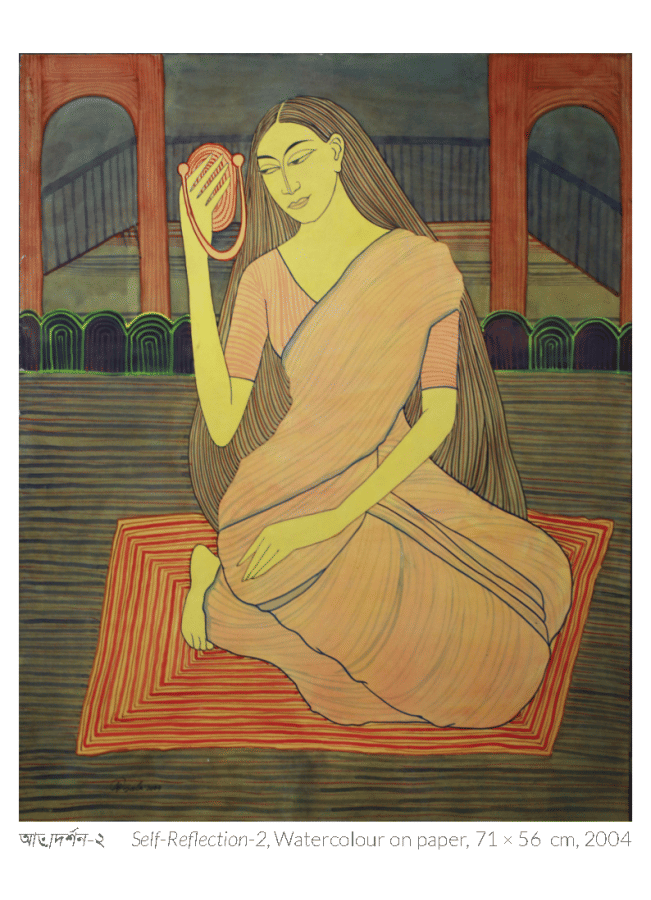
Technique and Materiality
The exhibition's aesthetic power lies as much in the how as in the what. Bala employs Bengali watercolour, gouache, tempera, and most notably the wash technique that Abanindranath Tagore revived in early twentieth-century Bengal.
In his words:
"Here I have mainly used the wash technique, but even among these, I've used different forms of it. The depth of colour comes from the layering; each layer must dry before another can be applied."
What this means in practice is a process of patience and ritual. Paper is dampened, pigment applied in delicate thin layers; the next layer waits until the previous sheet dries; forms emerge slowly. Bala likens the process to meditation and prayer.
In an era of bold brushstrokes and digital immediacy, this slow layering feels radical. The result is works that breathe — they don't shout. Colours are muted yet resonant; contours hint rather than declare. One visitor quoted in coverage said, "There was an immediate sense of calm … as though the soft tones themselves had agreed not to speak too loudly, and the gentle strokes of the brush could quieten the noise of one's thoughts."
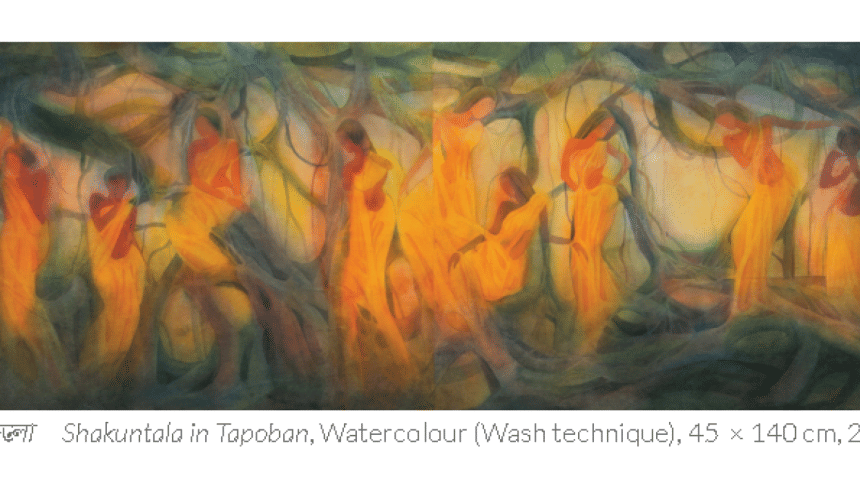
Rooted in Tradition, Reimagined for Now
While the show is imbued with devotional and mythic content, what makes it particularly significant is its cultural grounding. The paintings commit to indigenous Bengali art principles, content, styles, and natural materials. They draw upon the ideals of Ananda Coomaraswamy's Sacred Art and Tagore's swadeshi ethos, offering renewed expressions of Bengali traditional art.
In this, Malay Bala is both conservative and adventurous: conservative in his fidelity to technique, symbol, and tradition; adventurous in how he revitalises that tradition for our moment. The result is art that feels classical — but alive, urgent, intimate.
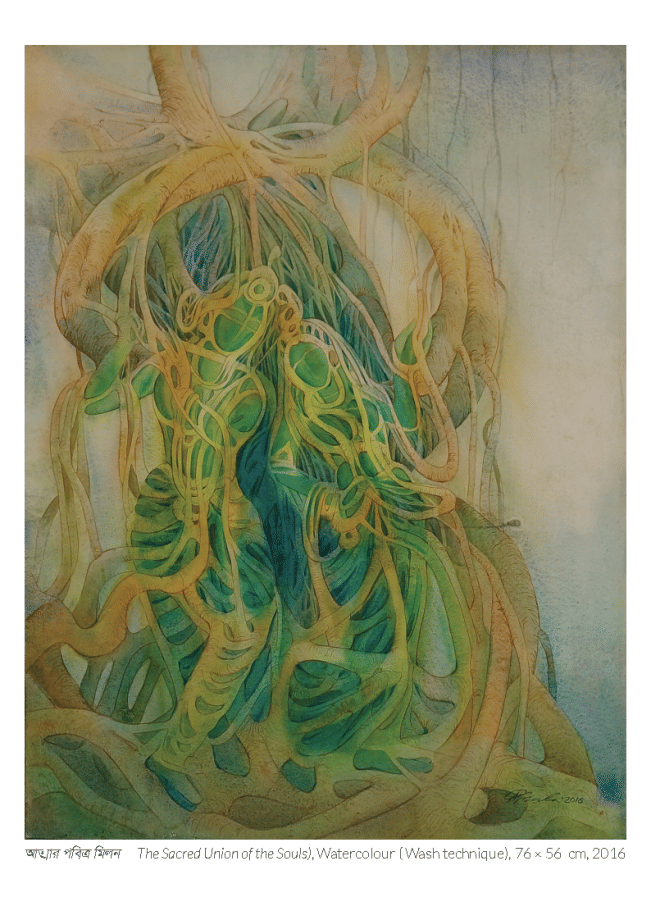
Ceremony, Dedication, and Dialogue
The exhibition's opening ceremony brought together cultural heavyweights: photographer Nasir Ali Mamun, artist Samar Majumder, and writer Sharifa Akhter. The show is also dedicated to the memory of renowned sculptor Beerangana Ferdousi Priyabhashini, a recipient of the Ekushey Padak, whose work combined craft, devotion, and national history.
Curator Mikhail Idris puts it succinctly: "Bala reveals a spiritual impulse to illuminate the sacred world, nature, and beings his heart beholds. His art symbolises, remembers, and contemplates the Sacred, to mysteriously rekindle the soul's vocation for Divine union."
For the Visitor
Walking through the gallery, one is struck by how different the series' atmospheres are. The Shakuntala pieces offer a kind of romantic melancholy, red and brown tones for love and loss. The Dharma works go into deeper stillness — greens, blues, austerity. The Sacred Women works glow with femininity and symbolic gestures. The Nature works let the viewer almost breathe alongside tree branches, birds, and quiet ambience.
To linger in front of a painting is to sense the process: one can see thin washes, paper textures, and time. From the catalogue text, one realises that what is being seen is more than representation — it is experience.
A Quiet Triumph
What Malay Bala offers is not a loud manifesto but a quiet triumph — a reverent conversation between painter and myth, tool and matter, soul and world. The viewer leaves not merely having seen paintings but having been invited to slow down, to breathe, to feel the sacred.
Photo: Courtesy
The writer is an artist and art critic.

 For all latest news, follow The Daily Star's Google News channel.
For all latest news, follow The Daily Star's Google News channel. 

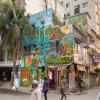
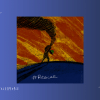
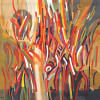

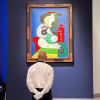


Comments